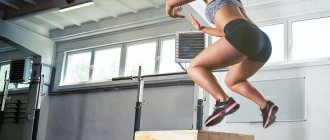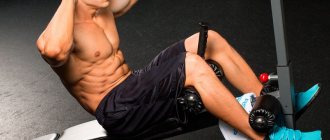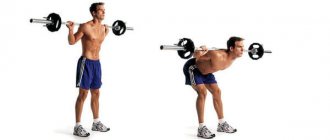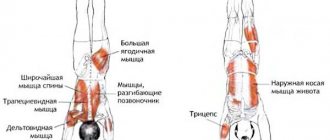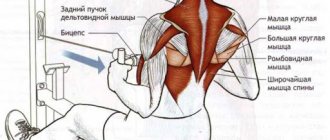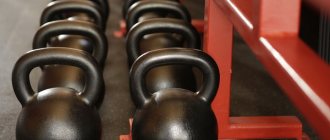Box jumps are effective for improving overall athleticism, but the big problem is that many people do this exercise incorrectly. Zozhnik translated an article by fitness expert Eric Bach on how to properly perform box jumps so that they actually bring benefits and do not destroy your joints.
To get even stronger, you need to get faster and develop explosive power, and the fastest way to develop it is to do box jumps.
Jumping is a great indicator of your explosiveness, athleticism, and relative strength, which is essential for almost any sport. And, yes, jumping will help you improve your body composition. The only problem is that they are advised to do too many and they are often performed with terrible technique.
Most of the impressive box jumps you see aren't really what they are. A 14 year old boy jumping onto a 137 cm tall box looks impressive, but in reality it is just a well-trained jump and excellent hip mobility, not pure explosive power. It’s even worse when people perform such pseudo-jumps. They don’t know how to land correctly and get injured.
Like any other exercise, box jumps are a training tool that should be handled with care and not just thoughtlessly thrown into your training program.
Soft landings
Box jumps are the most common type of jump in training programs for a reason - they reduce stress on your joints, calmly allow you to learn explosive power and land correctly and safely.
If we compare the landing phase of high jumps, long jumps and box jumps, box jumps place much less compressive stress on the knee joint.
This way, by performing box jumps, you can develop explosive power while avoiding damage to your knee joints. Box jumps, compared to other jumping options, can be trained quite often, since they do not have too powerful an effect on the entire body.
The benefits of trampolining for adults
In addition to the fact that jumping is the key to a great mood, it brings great benefits to the body due to its healing and preventive properties:
- Jumping activates the beneficial work of the lymphatic system, due to which the body gets rid of toxins that are harmful to health. Lymph flow can accelerate 10–15 times. In addition, accelerating the movement of lymphocytes helps the body fight infections more effectively and has the property of improving immunity in general.
- Aerobic exercises tend to have a beneficial effect on the functioning of the thyroid gland, so jumping helps bring your physical fitness back to normal and reduce cellulite.
- The stress on bone tissue when jumping leads to compaction of bones, tendons and joints, so the trampoline serves as a useful prevention of osteoporosis and some forms of arthritis, which, when they appear, harm the body.
- For older people, jumping can increase the supply of useful oxygen to body tissues. This allows you to fight the damage that causes degeneration of muscle tissue and bones.
Increased activity of the central nervous system
If you don't include explosive and speed exercises in your training program, then don't be surprised if the weights on the bar stop growing. By performing box jumps, you first of all strengthen the central nervous system, which will allow it to work better and more efficiently during training.
And by increasing the efficiency of the nervous system, you will improve explosive strength, which, in turn, will allow you to work longer and longer with submaximal weights and, as a result, build muscle mass.
Plyometrics: basic exercises
Depth jump + accelerated jump is one of the basic plyometrics exercises. The essence of the exercise is that the athlete gains kinetic energy at the moment of the jump; at the moment of landing, his muscles contract eccentrically to stop the body. Next, the eccentric contraction changes to concentric and a reverse jump is performed.
Each plyometric exercise consists of three phases. Phase one is stretching, phase two is shock absorption, and phase three is concentric phase. The athlete’s task is to learn how to perform each phase as quickly as possible and reduce the amount of time spent. Plyometric exercises help increase the production of muscles, tendons and nerves.
By doing exercises, a person develops muscle fibers, as a result of which he can run faster, jump higher, and hit harder. The undoubted advantage of plyometrics is the reduction of injuries. Athletes with trained tendons suffer fewer injuries – that’s a fact. Plyometrics also strengthens the nervous system.
The technique of a simple jump is not particularly different from an explosive one. At the same time, it is unacceptable for the athlete to squat too deeply so as not to lose the ability to develop explosive force. Such jumps help develop speed, agility, coordination and strength.
Pull-ups on horizontal bars are also often referred to as plyometrics. In this case, pull-ups should occur in jerks. Thus, the athlete forces the muscles of the arms, forearms and back to work more impulsively. Step exercises are also elements of plyometrics.
Improve your technique
Unsystematic and erratic jumps are indicators of sloppy technique. Therefore, strive for the following:
- You should land on your full foot and not put your weight on your toes or heels.
- Your knees should be in a neutral position. They do not need to be bent either in or out.
- The abdominal muscles are tense. Try not to round your spine.
- Look slightly up, chest forward.
- As soon as you reach the highest point of the jump, stop immediately and fix your position, this will reduce the risk of injury.
- If you jump higher than 50 centimeters, then place another box next to it, slightly smaller than the one you are jumping on, so that you can safely get off it. This will take the stress off the Achilles tendons and prevent completely unnecessary injuries.
How to perform basic steps correctly?
Before complicating the exercises with weights, you need to learn how to correctly perform the steps themselves. A competent Basic Step technique is much more complicated than it might seem. However, only the right movements will help you get the maximum benefit.
Add more load when you feel like you're at your limit. By the end of the lesson, the basic steps will become more and more difficult, although each person has his own concept of “heaviness”. You cannot stop: it is at this moment that the maximum tension of all muscle groups will bring a positive result.
Preliminary preparation:
- Place a cabinet, bench or platform directly in front of you. The lifting height for beginners should be minimal.
- Take a step and place your foot on the apparatus, keeping your body straight.
- Pay attention to the placement of your hips: when performing a step, you cannot move your raised leg to the side; it should always be positioned straight in front of you.
- Tighten your abdominal, gluteal and back muscles.
- Avoid springy movements and jumps when pushing your foot off the floor.
Technique:
- Place emphasis on the heel of the foot that is on the platform. Push up and pull your torso up. Tighten your glutes and quads.
- Make sure that during movement the load falls on the muscles, and not on the kneecaps and joints.
- Lower one leg back to the floor, then the other. When descending, the body can be slightly tilted forward, but the muscles of the abs, buttocks and back must be kept tense.
- Keep your feet shoulder-width apart throughout your step workout. Maintain an upright posture.
What not to do when performing box jumps
Box jumps are a great tool that will help you increase your performance, but any training tool that is used haphazardly can only cause harm instead of positive athletic results.
No need to do box jumps to improve overall fitness
When you use box jumps to improve overall fitness by performing them in a high-repetition style, unfortunately, the risk of injury outweighs the possible positive effect on your fitness.
When beginners begin using this exercise to improve their overall fitness, they often suffer from poor landing technique, which in turn can lead to shin damage (when the foot pronates), and constantly landing with x-shaped knees will eventually end It's deplorable for them.
Performing box jumps in a high-repetition style and at a fast pace will not allow the hip joint to fully extend, which is not good. Without full extension in the hip joint, it is impossible to properly jump in height, run a sprint, perform a good squat with a barbell, or fully straighten up in a deadlift.
Use box jumps where they belong - before training, as an exercise for explosive strength, and to improve overall fitness, it is better to jump rope.
There is no need to do box jumps if you are an ordinary gym goer who spends most of his time sitting at the computer.
Most fitness enthusiasts have low physical activity, they rarely go to the gym, and their physical condition does not allow them to perform high-volume exercises that require enormous effort. For them, the norm is sedentary work, slow, calm cardio and strength training on machines.
If you belong to this type of practitioner, then starting to do box jumps without first thoroughly studying the technique of the exercise is a direct road to injury. Before you start box jumping, jump rope for two weeks (just not at a very fast pace), and then start doing short box jumps, practicing the correct landing technique before moving on to more serious loads.
Execution technique
Box jumps are less dangerous compared to other types of jumps, because puts less strain on the joints. Therefore, they can be used in training quite often. But! There is a risk of injury if your toe catches on a box, so you need to do this exercise with extreme concentration and attention. Despite its apparent simplicity, performing jumping jacks will require your utmost concentration. It is recommended to do this exercise at the beginning of your workout. Remember that aimless movements are a direct path to injury. Therefore, first carefully understand the technique.
Jumps are performed using one single device - a stand. Its size is most often 50, 60 and 75 cm. The height of the box should be chosen based on your level of training. It's worth starting from a low height.
Initial position
The legs are hip-width apart, the back is straight, and the chest is forward. The gaze is not directed at the cabinet, but slightly upward. The abdominal muscles should be tense, which will prevent you from rounding your back. In order for the jump trajectory to be smooth and the pressure on the joints to be minimal, you should not get too close to the platform.
© leszekglasner — stock.adobe.com
We don’t hunch over like a hook - we instinctively want to bend over a little in order to hang over the box. There is no need to do this!
Box jump
- We bend the knee joint and move our arms back. Your knees should remain neutral. There is no need to bend them inward or outward. This will disrupt your technique, which can lead to injury.
- With a powerful movement of our legs we push off the floor and make a jump. At the same time, we swing our arms and slightly pull our knees towards our chest.
- The landing should be soft. The weight is distributed evenly across the foot. The depth of the squat at the moment of landing on the box is the same as at the start.
- On the pedestal we do full straightening of the knee and hip joints. The hands also relax.
© leszekglasner — stock.adobe.com
Back from the box
We jump off the pedestal. We land carefully on slightly bent legs. From this position, without pausing, we jump again. When jumping back from the box, you don’t need to make any additional efforts - we just jump down completely relaxed with our back as straight as possible and our legs slightly bent.
Attention! There is a variation of jumping jacks in CrossFit that are done without stopping. That is, when you jump off the box and are already on the floor, you cannot rest for more than a second and must immediately jump back onto the box. In this case, the jump is done according to the same rules - only with the amendment that a micro-pause can only be made while at the top of the box.
It is worth noting that the amount of energy generated will depend on the length of the shock absorption phase during landing. This phase represents the transition from stretching to contracting the muscles at the beginning of their concentric work. The shorter this phase, the better results you will get. In other words, if you jump without delay, you conserve energy and achieve greater speed.
If you are a beginner and you are unable to repeatedly jump onto the stand without stopping on the floor, you can try not jumping off the stand, but simply walking off it. However, this results in the loss of elastic deformation energy, which reduces the effectiveness of the exercise. Jumping puts additional stress on joints, tendons, ligaments, and also allows you to do more work in less time.
Let’s watch the technique of jumping on a stand in CrossFit in the video – it’s very simple and clear:
Complicating the exercise
If you have already sufficiently worked out your jumping technique, you can complicate the exercise by increasing the height of the stand. To do this, you can simply put a few pancakes on the box. To jump higher, you will need to learn to pull your legs closer to your chest. When performing this type of jump, you will land on the plates while squatting.
Tips for Beginners
Before performing jumping jacks, jump rope for about two weeks. Then practice the correct technique on a short box.
- Note the importance of full hip extension and landing correctly.
- When increasing the height of the box, the technology should not suffer. You should not jump on a cabinet if you do not have sufficient training.
- If you feel pain or excessive tension in the joints, stop doing the exercise.
Creating a box jump program
First, if you feel pain while doing an exercise, don't do it. If you can't box jump correctly, start low. If an exercise doesn't meet your training goals, it's best to leave it.
The gentle nature of box jumps (when performed correctly) is great for strength training practitioners. For them, box jumps are a great tool for increasing athleticism and explosiveness without the same risk of injury as the high jump.
Box jumps are an explosive exercise and should be performed immediately before resistance training, but after warming up. Start performing 2-3 sets of 3-5 repetitions of static box jumps (we jump onto the box according to all the rules, but come down from it carefully, without jumping).
Remember: large volume is not important. High performance is important. Two to four sets of 3 to 5 reps is what most people need.
Benefits of Burpees and Jumping Rope
These exercises have several benefits:
- Almost the entire body is pumped. By doing burpees, you work your thighs, buttocks, calves, chest, shoulders, triceps, abs, and hip flexors. When jumping rope, your calves, thighs, buttocks, abs, back, arms and shoulders work.
- Provide cardio exercise and improve the functioning of the cardiovascular system.
- Suitable for weight loss. Exercise burns more calories than running at a leisurely pace, so combining burpees and jumping rope is a great workout option for those looking to lose weight.
- They pump up explosive power - the ability to make maximum effort in minimal time.
- They have many variations. There are a huge number of variations of these exercises, so you will always have a more challenging variation to aim for.
- Do not require special conditions. You don't need any equipment for burpees, and jump ropes are very cheap.
- Both exercises can be done anywhere.
Next, we will take a closer look at the features of the technique, options for performing exercises, and the number of repetitions.
Example of load progression
Perform box jumps 2 times a week after a dynamic warm-up.
Week 1: Jump rope for 5-10 minutes (before or after training) three times a week. Week 2: 2x5 Week 3: 3x4 Week 4: 4x4 Week 5: (raise the height of the box) 3x5 Week 6: 4x4 Week 7: 4x3 Week 8: (raise the height of the box) 3x3
The most important thing is full hip extension and proper landing technique, not the height of the box.
Leave your ego at the gym door because there are no championships in box jumping.
Without full hip extension, you are minimizing the full training effect of this exercise and are not developing full explosive strength and athleticism. And you also look very stupid from the outside.
Source: t-nation.com
Read on Zozhnik:
Workout: Single Kettlebell, The Power 5 by Scott Lardell
Workout: 25 pull-up program
Non-trivial workouts: yoga ballet.
How quickly do you lose shape when you take a break from training?
Is it possible to exercise while breastfeeding? What about drinking alcohol?
Classic burpee technique
Perform a partial squat and lower your hands to the floor.
From this jumping position, go into a lying position.
Bend your arms and lower your body down, touching the floor with your chest. You can also touch the floor with your stomach and thighs.
Push yourself up while lying down.
Jump your feet toward your hands. Don't bend your legs too much. The angle at the knee should be as obtuse as the stretch allows. This protects the knee joint during numerous repetitions.
Jump up, straightening your body completely and stretching your arms above your head.
